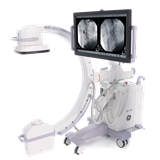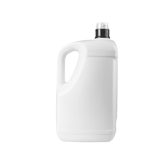Surgical procedures demand precision and clarity, making surgical headlights and loupes indispensable tools for medical professionals.
Ensuring these tools' optimal performance and durability relies on adhering to proper maintenance practices.
This article delves into the technical aspects of maintaining surgical headlights and loupes to enhance their functionality and lifespan.
I. Proper Cleaning and Disinfection Practices
A. Necessity of Maintaining Cleanliness in Surgical Environments
Surgical settings require aseptic conditions to minimize the risk of infections and complications.
Clean surgical equipment, including headlights and loupes, is essential for patient safety and successful outcomes.
B. Step-by-Step Cleaning and Disinfection Procedures
- Pre-Cleaning Inspection: Begin by examining the equipment for any visible debris or contaminants.
- Disassembly: Carefully disassemble detachable parts according to manufacturer guidelines.
- Initial Cleaning: Use a soft, lint-free cloth dampened with mild soap and water to wipe down surfaces.
- Disinfection: Follow hospital protocols for using appropriate disinfectants to eliminate bacteria and pathogens.
- Drying: Allow components to air dry or use lint-free cloths to prevent water damage.
- Reassembly: Put the equipment back together once all parts are thoroughly dry.
C. Appropriate Cleaning Agents and Techniques
- Approved Cleaning Agents: Only use cleaning agents recommended by the manufacturer to prevent damage.
- Avoid Harsh Chemicals: Harsh chemicals can degrade materials and compromise equipment performance.
- Gentle Techniques: Use gentle wiping motions to avoid scratching lenses or surfaces.
- Crevice Cleaning: Pay special attention to crevices and joints where dirt can accumulate.
- Avoid Immersion: Never immerse surgical headlights or loupes in water or cleaning solutions.


Find the right Surgical Headlight & Loupe
Compare quotes from expert Australian suppliers and make the best choice. It's free, quick and easy!
II. Storage and Handling to Prevent Damage
Improper storage and handling of surgical headlights and loupes can lead to significant damage, affecting their performance and longevity. It's crucial to adopt proper storage and handling practices to ensure these essential tools remain in optimal condition. Here's a comprehensive guide on mitigating potential risks and safeguarding your investment:
A. Potential Risks of Improper Storage and Handling
Improperly storing and mishandling surgical headlights and loupes can result in various risks, including:
- Physical Damage: Bumps, falls, or pressure can lead to scratches, cracks, or misalignments, impacting functionality.
- Optical Distortions: Incorrect handling might lead to misalignment of optics, causing distortions that affect visualization.
- Light Source Compromise: Storing headlights in areas with extreme temperatures or humidity levels can harm the light source's performance.
- Loss of Calibration: Loupes can lose calibration if not stored properly, leading to inaccurate magnification and focal length.
B. Guidelines for Safe Storage and Transportation
Adhering to proper storage and transportation practices is essential to prevent damage:
- Protective Cases: Always store surgical headlights and loupes in dedicated, padded cases to shield them from external forces.
- Avoid Pressure: Keep items in a position where they won't be subjected to excessive pressure or weight.
- Secure Fastenings: Ensure any straps, buckles, or closures on the storage cases are properly secured to prevent accidental openings.
- Isolation from Liquids: Store these instruments away from liquids to avoid potential water damage.
C. Importance of Protective Cases and Proper Storage Conditions
Utilizing protective cases and suitable storage conditions is fundamental:
- Impact Absorption: Protective cases with cushioning materials absorb shocks and prevent impacts from reaching the equipment.
- Dust and Debris: Proper cases safeguard against dust and debris accumulation that could hinder functionality.
- Temperature and Humidity: Store equipment in a controlled environment, avoiding extremes in temperature and humidity that could harm sensitive components.
- Avoid Direct Sunlight: Prolonged exposure to direct sunlight can affect the integrity of materials and optical elements.
III. Regular Maintenance to Address Wear and Tear
Proper maintenance plays a pivotal role in sustaining the performance and longevity of your surgical headlights and loupes. Through routine upkeep, you can prevent wear and tear, ensuring that these critical tools continue to function optimally. This section outlines the importance of regular maintenance, provides a comprehensive maintenance schedule, and underscores the significance of this practice in maintaining consistent performance.
A. Explain the Concept of Regular Maintenance
Regular maintenance involves a series of planned actions aimed at preserving the functionality and structural integrity of your surgical headlights and loupes. By adhering to a well-defined maintenance routine, you can counteract the effects of daily wear and environmental factors. This proactive approach helps avoid sudden malfunctions and extends the operational life of your equipment.
B. Detail a Maintenance Schedule
- Cleaning: Begin your maintenance schedule with regular cleaning. After each use, carefully remove debris, organic matter, and contaminants from the surfaces using a soft, lint-free cloth. Use a mild cleaning solution recommended by the manufacturer to avoid damaging sensitive components.
- Lubrication: Some components of surgical headlights and loupes may require lubrication to maintain smooth movement and prevent friction-related damage. Consult the manufacturer's guidelines for suitable lubricants and the recommended frequency of application.
- Inspection: Regular inspection is essential to identify any signs of wear, damage, or misalignment. Check for loose screws, worn-out components, and any unusual changes in functionality. Addressing issues promptly can prevent further deterioration and more costly repairs.
C. Emphasize the Role of Maintenance
Regular maintenance goes beyond mere preservation—it actively contributes to sustaining consistent performance. By keeping all parts clean, lubricated, and in optimal condition, you ensure that the precision and accuracy of your surgical procedures are never compromised. The smooth operation of adjustable features, clarity of optical elements, and reliability of light sources are all safeguarded through diligent maintenance.
IV. Replacing Components and Upgrading Technology
In the realm of surgical headlights and loupes, maintaining optimal functionality is paramount. This involves a combination of vigilant maintenance practices and, when necessary, the replacement of worn-out components. Moreover, staying abreast of the latest technological advancements is pivotal not only for keeping up with the evolving field but also for harnessing the benefits of cutting-edge innovations.
A. Replacing Worn-Out Components for Optimal Functionality
Over time, the components of surgical headlights and loupes undergo natural wear and tear due to their consistent use in demanding medical procedures. To ensure the continued precision and reliability of these essential tools, it becomes imperative to replace worn-out components. Such components could include the light source, batteries, lenses, and structural elements. The replacement of these elements is not only essential for maintaining the quality of illumination and magnification but also for the overall ergonomic design and comfort for the surgeon.
B. Harnessing Technological Advancements for Enhanced Performance
Staying at the forefront of technological progress offers multifaceted advantages in the domain of surgical equipment. Incorporating the latest technological innovations can significantly augment the capabilities of surgical headlights and loupes. For instance, advancements in LED technology can lead to brighter, more focused illumination, which is crucial for intricate procedures. Similarly, the integration of advanced optics can elevate the magnification quality, enabling surgeons to work with unparalleled precision.
C. The Process of Component Replacement and Technology Upgrades
The process of replacing components and upgrading technology in surgical headlights and loupes follows a structured approach. It starts with a comprehensive assessment of the equipment's condition, which may involve regular maintenance checks or troubleshooting. Based on the assessment, decisions are made regarding which components need replacement. Manufacturers often provide guidelines or services for component replacement, ensuring compatibility and optimal performance.
Technology upgrades involve integrating new features or functionalities into the existing equipment. This might encompass firmware updates, software enhancements, or even hardware modifications. The upgrading process typically requires collaboration between the surgical team and the manufacturers to ensure seamless integration with existing workflows and user preferences.
By replacing worn-out components and embracing technological advancements, surgeons can not only extend the lifespan of their equipment but also experience heightened performance, leading to more accurate procedures and improved patient outcomes.


Find the right Surgical Headlight & Loupe
Compare quotes from expert Australian suppliers and make the best choice. It's free, quick and easy!
V. Collaboration between Surgeons and Manufacturers
A. Importance of Collaboration
- Surgeons and manufacturers collaboration is pivotal for advancing surgical headlight and loupe technology.
- Manufacturers benefit from firsthand knowledge of real-world surgical needs and challenges.
- Surgeons' insights help manufacturers tailor products to meet specific requirements, enhancing overall usability.
B. Feedback-Driven Product Improvements
- Surgeons' feedback serves as a crucial source of product improvement ideas.
- This feedback loop facilitates iterative design enhancements based on practical usage.
- Manufacturers can address pain points and refine features, resulting in more effective equipment.
C. Examples of Successful Collaborations
- Innovative Illumination Design: Collaboration led to headlights with adjustable intensity, optimizing visualization.
- Ergonomic Loupe Design: Surgeon input influenced the creation of loupes with customizable fits, reducing discomfort.
- Optics Precision Enhancement: Manufacturers worked with surgeons to enhance lens coatings, improving image clarity.
In conclusion, the maintenance and extension of the lifespan of surgical loupes and headlights are critical endeavors in the realm of healthcare. Adhering to proper cleaning and disinfection practices, safe storage and handling procedures, regular maintenance routines, and the timely replacement of components are essential steps to ensure these indispensable surgical tools perform at their best. Furthermore, collaboration between surgeons and manufacturers fosters innovation and customization, further enhancing the usability and effectiveness of these tools in the pursuit of precision and clarity in surgical procedures. Ultimately, the meticulous care and attention given to surgical loupes and headlights translate into improved patient safety and successful surgical outcomes.


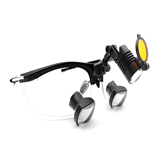
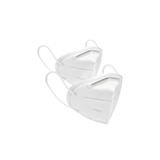
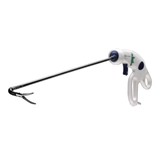
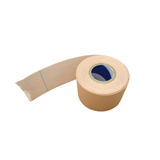

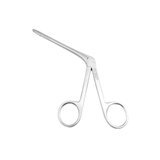
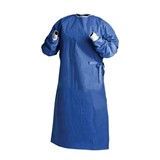
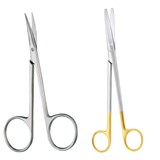
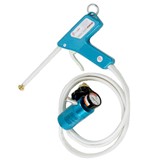
%20(1)-160x160-state_article-rel-cat.png)
